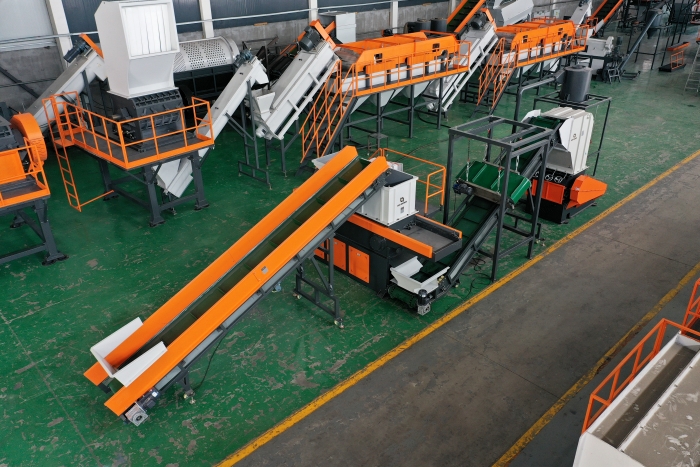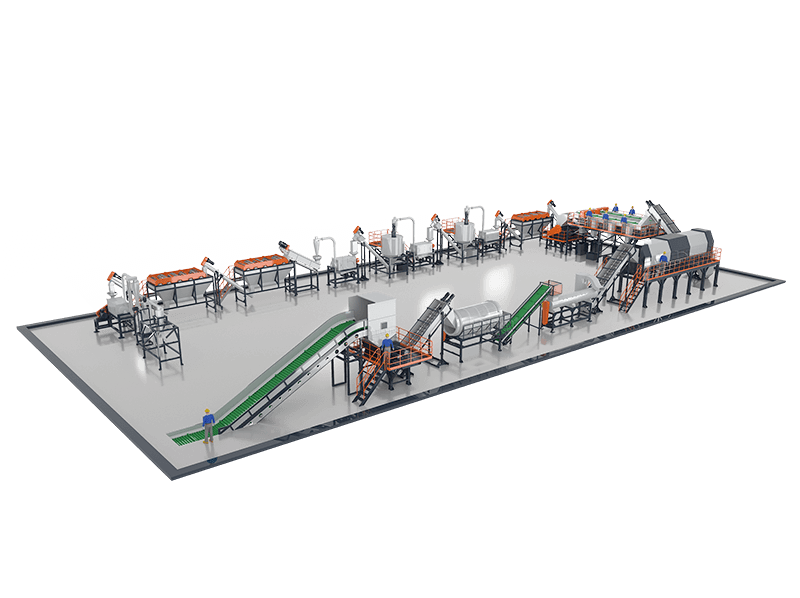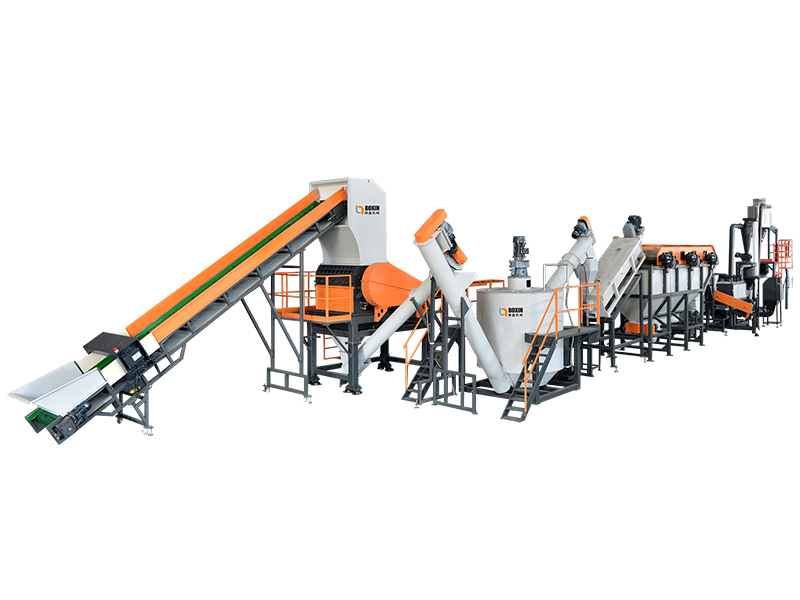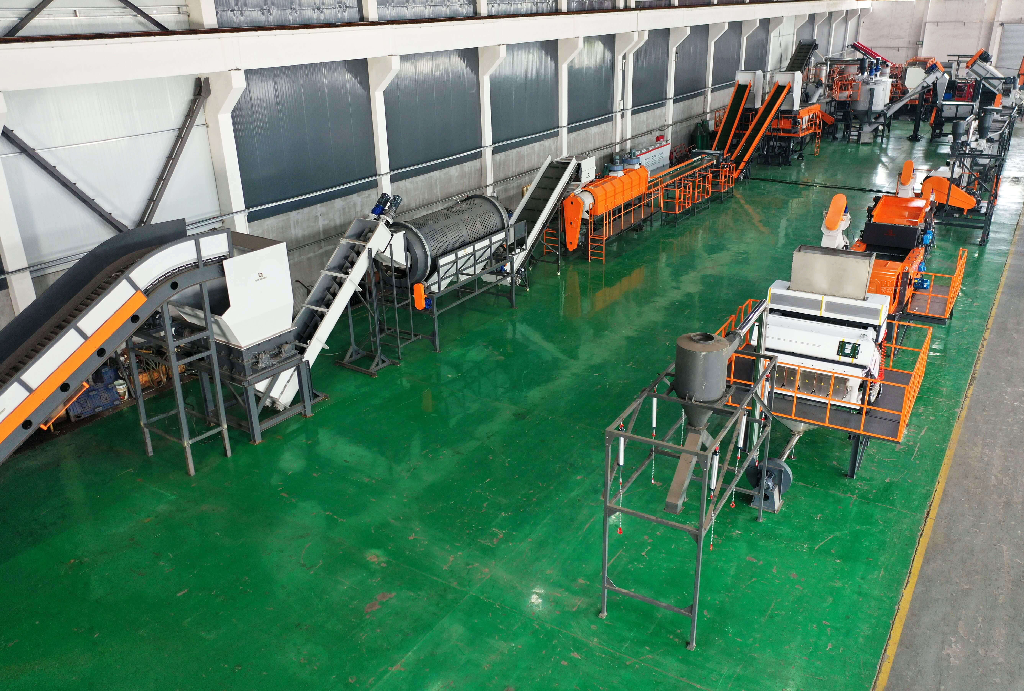The processing volume of a small plastic-waste recycling facility depends on the chosen combination of equipment specs and its level of automation. In general, these plants fall in the mid-size category, with a typical capacity of about 300–600 kg per hour—equivalent to several tons of waste plastic per day under a standard configuration.
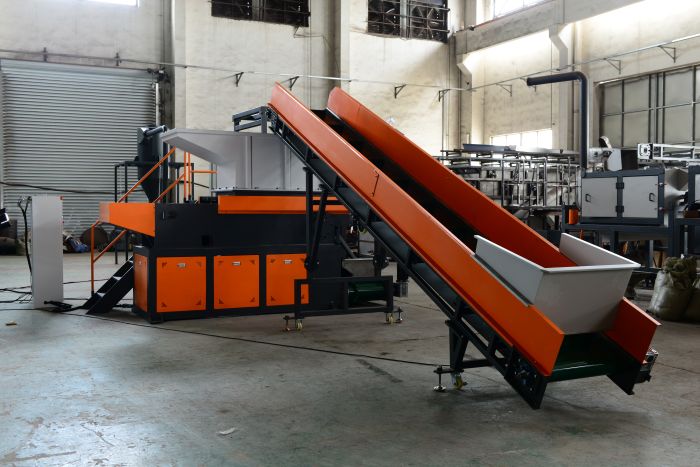 |
Feeding conveyorA belt conveyor carries loose plastic scrap steadily to the shredder inlet. When choosing a belt, match its width and length to the part size and floor layout. Its purpose is to provide uniform feeding and avoid the discontinuity and safety risks of manual dumping. |
 |
Coarse-size reductionThe plastic shredder cuts large pieces into 20–80 mm fragments in a single pass. A single-shaft model with a hydraulic pusher is most common: the ram presses material against the rotating cutter drum for shearing. Key selection factors are drum width and motor power. For purgings or thick-wall pipes, choose a shredder with high torque and a wide charging throat so whole pieces can be fed without pre-cutting. |
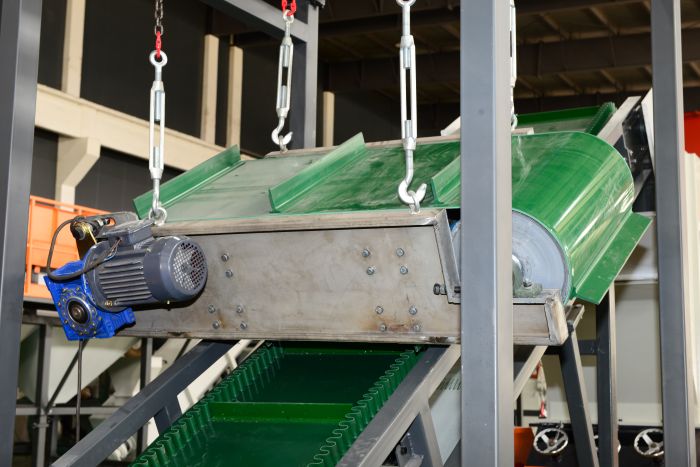 |
Metal separationA suspended permanent-magnet separator (or magnetic pulley) is installed above the post-shred discharge belt to automatically remove ferrous contaminants such as nails, screws, or blades. Height must align with the belt, and magnetic strength must lift metal buried in the flakes. The logic: protecting the downstream granulator’s knives and bearings from impact damage—an essential safety investment for small lines. If feedstock is proven metal-free, the magnet can be omitted, but most plants install it for peace of mind. |
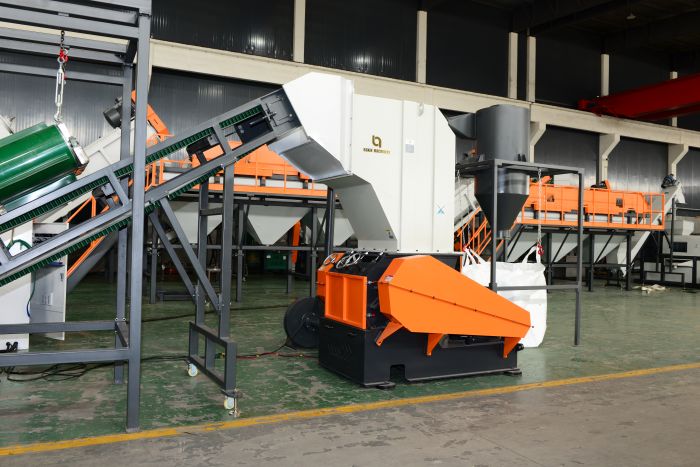 |
Fine-size reductionThe granulator / high-speed crusher grinds the pre-shredded pieces to ~10 mm chips. It uses a fast-rotating rotor with bed knives to shear material across a screen. Check feed-throat size, rotor diameter, motor power, and screen hole size: the right second-stage granulator ensures uniform chip size and higher recycled-flake quality. |
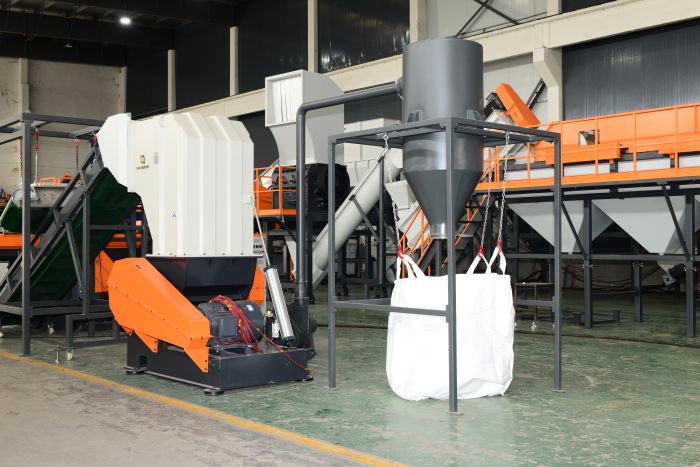 |
Conveying & collectionA pneumatic system of blower, ducting, and silo conveys the chips quickly into a collection bin. Small silos hold a few dozen to a few hundred kilograms. Air conveying eliminates repeated manual stops to empty material, boosting production continuity. |
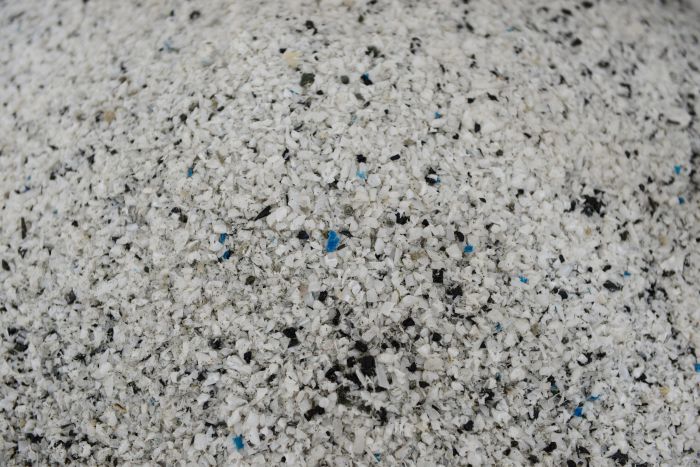 |
Finished product |

 EN
EN 
 English
English 简体中文
简体中文 Русский
Русский España
España عرب .
عرب .